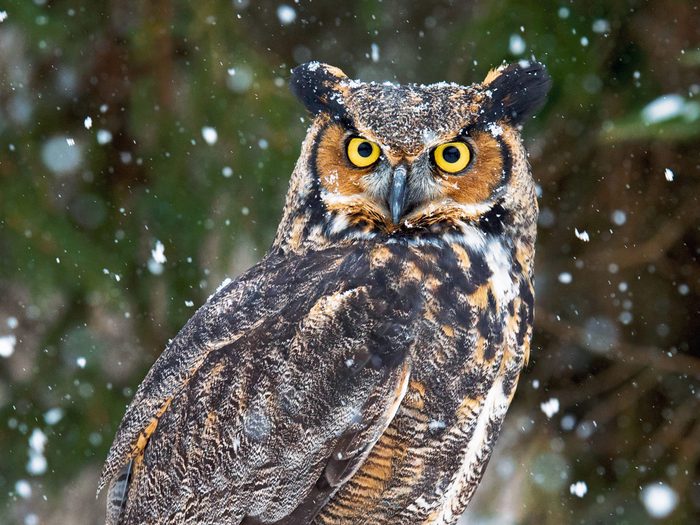
Winter birds are my passion
I love winter birds and I love photographing them in snow. That being said, I confess that I’m a fair-weather birder. Worse, I’m a lazy, fair-weather birder. I don’t like weather extremes, so when it’s very hot or really cold, you’re hard-pressed to get me to leave the comfort of home. In summer, I only photograph hummingbirds in my yard, and in winter, I try to only go out on relatively mild days. Most of my bird photography is done within an hour’s drive of my hometown of Elmira, Ontario. So it’s all about finding a balance that works.
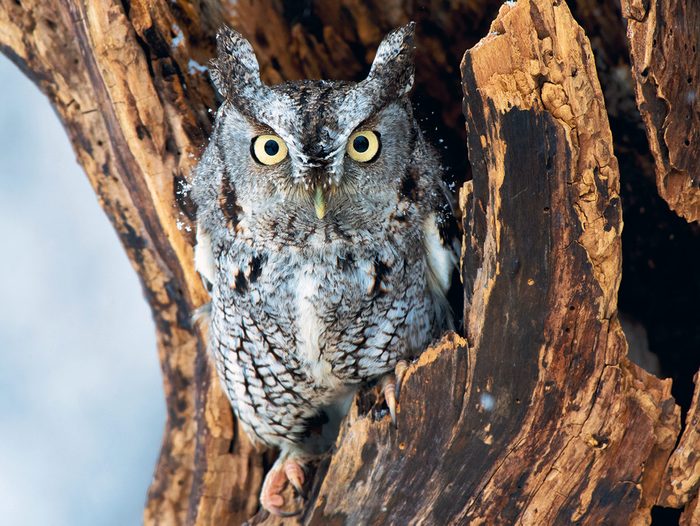
Tips for photographing owls
Winter is prime time for birders and bird photographers alike to hit the roads and woods in search of owls. While great horned and screech owls are around all year long in southwestern Ontario, we can generally expect to be visited by snowy, long-eared, short-eared, barred, and saw-whet owls in the winter. If you know where to look, you can sometimes be lucky enough to spot these beautiful winter birds. Snowies, for example, seem to be drawn to the shores of large bodies of water and areas with wide open fields. They’re also active during the day, which makes them especially appealing to birders. The key thing to keep in mind is that the owl’s well-being is the most important thing. Stay well back from the bird and use a long telephoto lens. My current birding lens is a 200-500mm, and while I love it, it’s a beast—it’s always on a tripod or shoulder holster because it’s too heavy for me to hand-hold. Remember that it’s not about getting the perfect shot, it’s about ensuring the owl remains undisturbed.
Discover the best bird-watching spots across Canada.
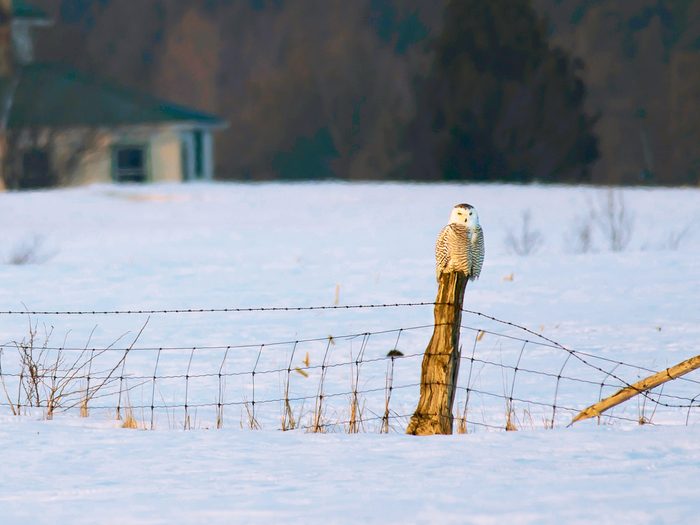
My favourite owl moment
The winter of 2014 was a great year for snowy owls here in Woolwich Township. One day in early March, I was on my way home from work and about to turn onto our road when I spotted a stunning snowy sitting in a tree right at the intersection. I pulled over to admire him, but then kept heading home. Two hundred metres or so down the road, there were two more snowies in a field by a fence, and in the next field over, another on top of a fence post. Needless to say, I continued home, grabbed my camera and went right back out to get some pictures. It was one of the most magical local birding moments I’ve ever experienced.
Here’s more fantastic photography showcasing the beauty of the Canadian winter.
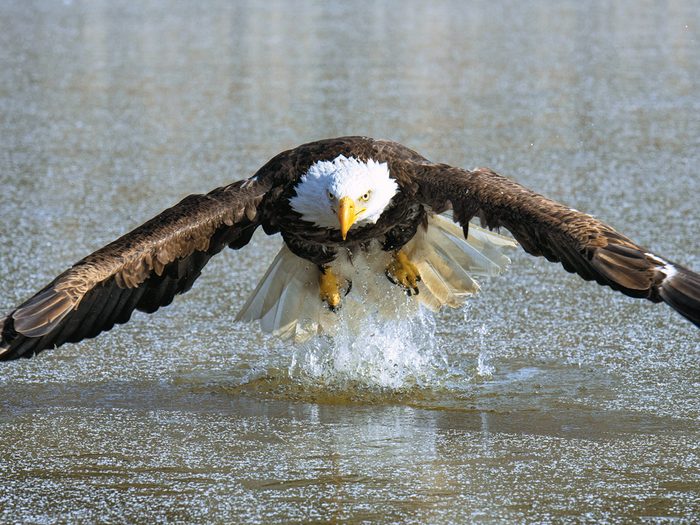
The best places to photograph raptors
When I’m looking for excellent opportunities to photograph owls and other raptors without racking up dozens of hours searching for them—and if I’m lucky, finding one that’s semi-cooperative—I head to the Canadian Raptor Conservancy (CRC) or the Mountsberg Raptor Centre. I’ve attended so many photo sessions at each of these fantastic facilities that I’ve lost count.
Check out more hidden gems in Ontario.
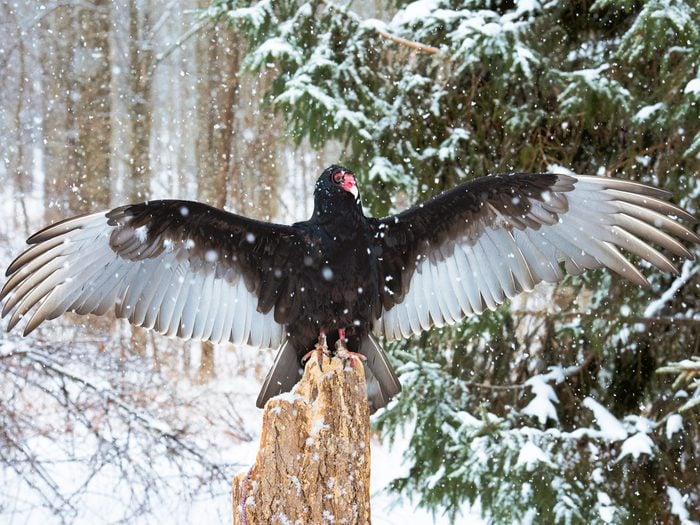
The magic of snowfall
Winter sessions at both Mountsberg and the CRC are wonderful. You have fantastic access to beautiful winter birds in natural settings, and you’re practically guaranteed to get photos you’ll be happy with. While I always try to dress for the weather, there, I can just pop inside the main buildings to warm up if I get too cold. My most recent photo session at Mountsberg was on a mild, snowy day, and I was thrilled with how beautiful the pictures were with big, white, fluffy flakes creating a peaceful look and feel.
Enjoy more breathtaking bird photography from across the country.
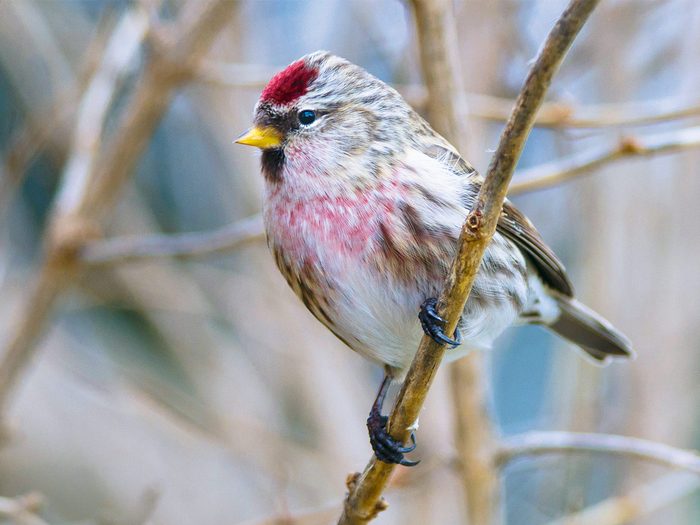
Photographing winter songbirds
Songbirds tend to be much easier to find and photograph. We have quite a few that frequent our yard regularly, including northern cardinals, black-capped chickadees, dark-eyed juncos and American tree sparrows. But it’s the finches—goldfinches, house finches and redpolls—that I really love. I was so disappointed when we didn’t have redpolls the first few winters we were in our farmhouse. In December 2012, however, I learned to be careful what I wished for. We were invaded by a flock of several hundred redpolls that stayed for a good six weeks. They nearly ate us out of house and home, going through 50 pounds of sunflower chips a week. At least I was able to get out and take some pictures of the cuties when they were here. It made me happy, especially since they haven’t been back since.
Make sure you never feed this to wild birds.
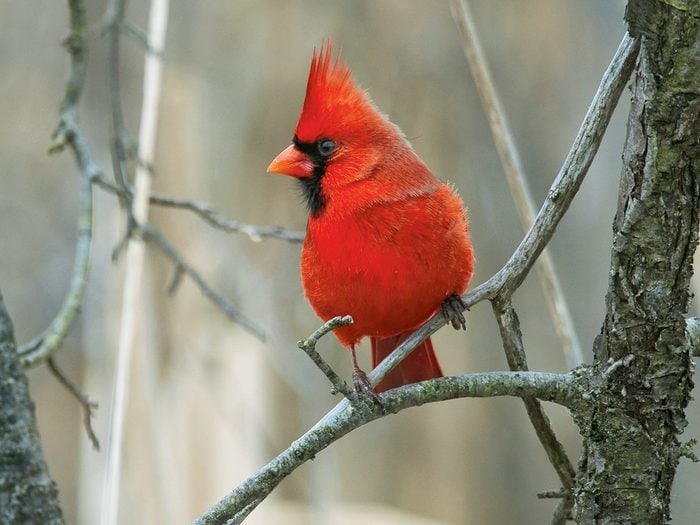
Winter bird-watching in Cambridge
Generally speaking though, I prefer to go somewhere open for winter birds, where they’re used to lots of people and are less skittish than the average yard bird. Riverside Park in Cambridge, Ontario, is a great spot. There are seed feeding stations all along the path that winds through the marsh. Chickadees and nuthatches will happily eat from your hand. Cardinals flit about in the trees, waiting to steal a seed when your back is turned. Sparrows and juncos are everywhere. The birds there are curious and brave, and the open environment of the marsh allows for some excellent photographic opportunities. It’s also fun to be on watch for some of the bald eagles that patrol the rivers down in that part of Cambridge. I prefer to head down there on overcast days, so that the muted browns and greys of the background trees, and the browns and greys of most of the birds, make for a really nice monochromatic effect. That said, a nice sunny morning or afternoon can work well, too, making colours pop and providing a lovely warm, golden glow to the pictures.
Don’t miss our guide to the birds of the Grey-Bruce region.
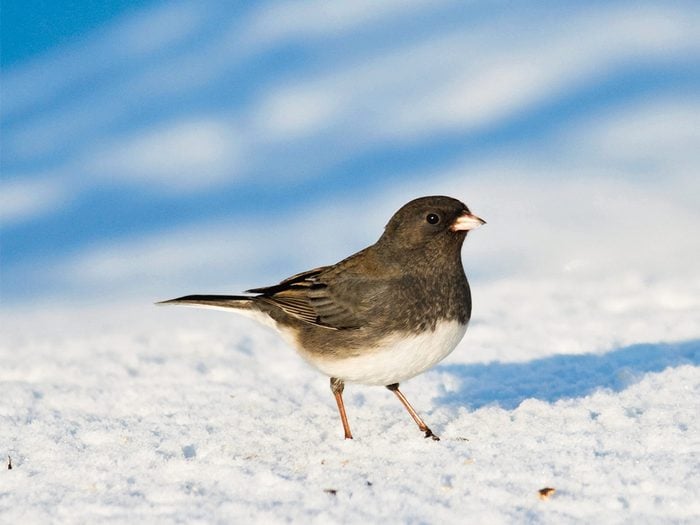
Practical tips for winter bird photography
If you’ve ever worried that you’re not enough of a winter fan or enough of an outdoorsy person to be a winter bird photographer, I’m living proof that it can be done. Make sure you have extra batteries for your camera and choose your destinations wisely. Go out when it’s mild enough that your nostrils don’t freeze shut when you breathe. Dress for the worst and make sure you’ve got a good supply of hand and feet warmers for your boots and gloves. And, possibly most importantly, always know where you can find the nearest washroom.
Next, check out another stunning showcase of Canadian birds on camera.